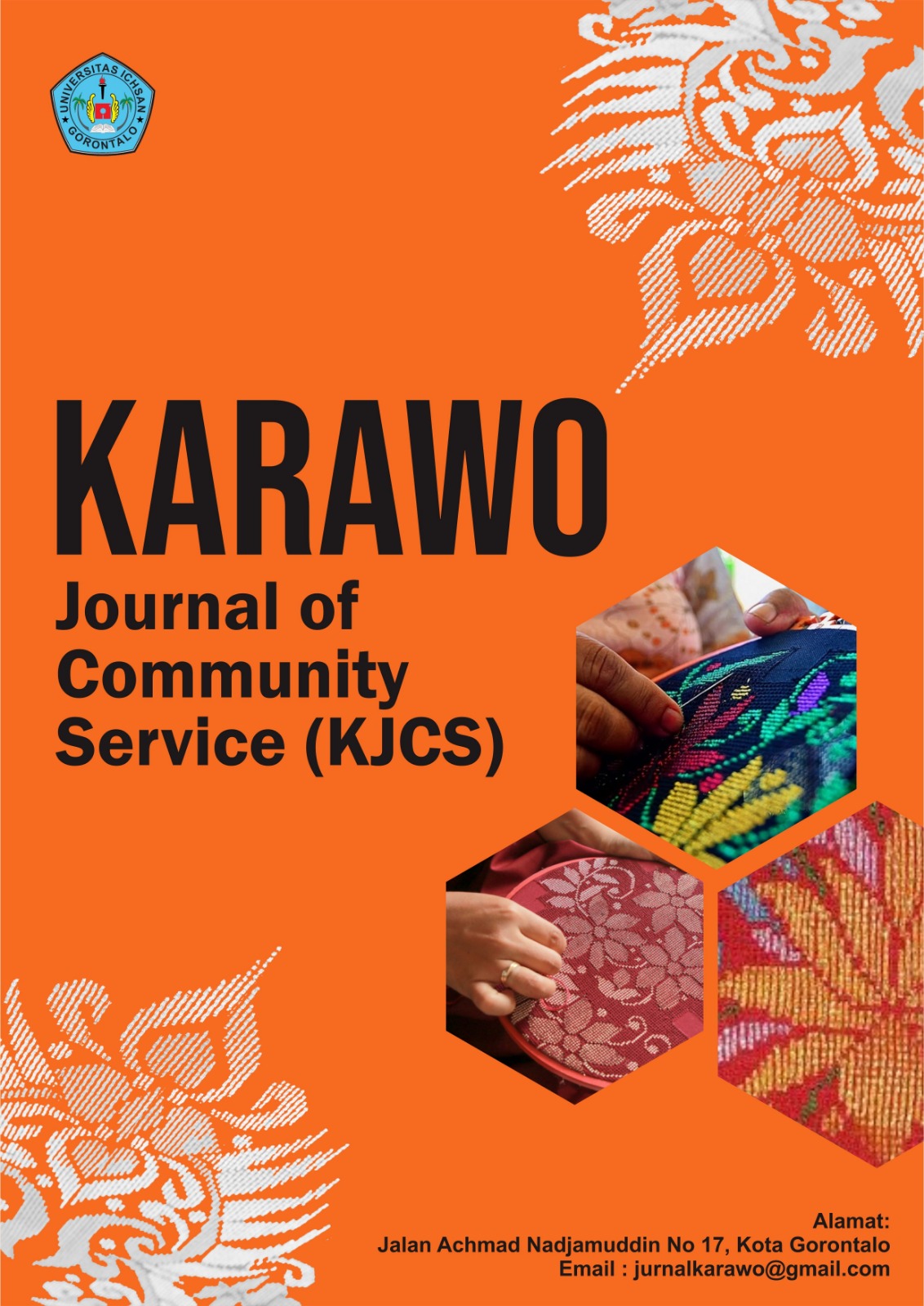Pelatihan Teknik Dasar Menyanyi dan Menjadi Dirigen bagi Siswa Kelas V di SDN 115 Pekanbaru
DOI:
https://doi.org/10.62951/karawo.v3i1.117Keywords:
Choir, Conductor, Singing training, Student potential development, Vocal techniqueAbstract
This community service activity aims to improve basic singing skills and the ability to become a conductor for grade V students at SDN 115 Pekanbaru. This training is designed to provide a basic understanding of correct vocal technique as well as choir leadership skills. The methods used include lectures, demonstrations, and hands-on practice, which are expected to increase students' confidence and musical abilities. The results of this activity showed a significant improvement in singing and choir leadership skills, which was measured through pre- and post-training evaluations. In addition, this activity also succeeded in increasing students' interest in musical arts and active participation in school extracurricular activities. Thus, this training is expected to be a model for other schools in developing students' musical artistic potential.
References
Bruner, J. S. (1986). Actual minds, possible worlds. Harvard University Press.
Campbell, P. S., & Scott-Kassner, C. (2010). Music in childhood: From preschool through the elementary grades (4th ed.). Cengage Learning.
Custodero, L. A. (2005). The role of music in the development of young children: A review of the literature. Early Child Development and Care, 175(3), 239-252. https://doi.org/10.1080/0300443042000300520
Davidson, J. W., & Faulkner, R. (2010). Music and the mind: The benefits of music education. Journal of Music Education Research, 12(3), 245-258.
Hallam, S. (2010). The power of music: Its impact on the intellectual, social and personal development of children and young people. International Journal of Music Education, 28(3), 269-289.
Hallam, S., & Prince, D. (2003). The effects of music on the development of children. International Journal of Music Education, 21(2), 115-124. https://doi.org/10.1177/0255761403021002003
Hargreaves, D. J., & North, A. C. (1999). The functions of music in everyday life: Redefining the social in music psychology. Psychology of Music, 27(1), 71-83.
Hargreaves, D. J., & North, A. C. (2001). The social and applied psychology of music. Psychology Press.
Levitin, D. J. (2006). This is your brain on music: The science of a human obsession. Dutton.
McPherson, G. E., & Hallam, S. (2009). Musical practice: Understanding the interdependence of musical and non-musical skills. Psychology of Music, 37(1), 1-12. https://doi.org/10.1177/0305735607085010
Overy, K., & Molnar-Szakacs, I. (2009). Music and the brain: The role of music in the development of the brain. Nature Reviews Neuroscience, 10(8), 579-588. https://doi.org/10.1038/nrn2660
Saarikallio, S., & Erkkilä, J. (2007). The role of music in adolescents' mood regulation. Psychology of Music, 35(1), 88-109. https://doi.org/10.1177/0305735607068880
Sloboda, J. A. (2005). The role of music in everyday life: Current directions in the social psychology of music. Psychology of Music, 33(1), 1-10. https://doi.org/10.1177/0305735605049490
Sutherland, M. (2010). Music and emotional intelligence: The role of music in emotional development. International Journal of Music Education, 28(4), 345-358. https://doi.org/10.1177/0255761410370660
Thaut, M. H. (2005). Rhythm, music, and the brain: Scientific foundations and clinical applications. New York: Routledge.
Winner, E., & Hetland, L. (2000). The arts and academic achievement: What the evidence shows. Journal of Aesthetic Education, 34(3-4), 11-75. https://doi.org/10.2307/3333667
Downloads
Published
How to Cite
Issue
Section
License
Copyright (c) 2025 Karawo : Journal of Community Service (KJCS)

This work is licensed under a Creative Commons Attribution-ShareAlike 4.0 International License.









